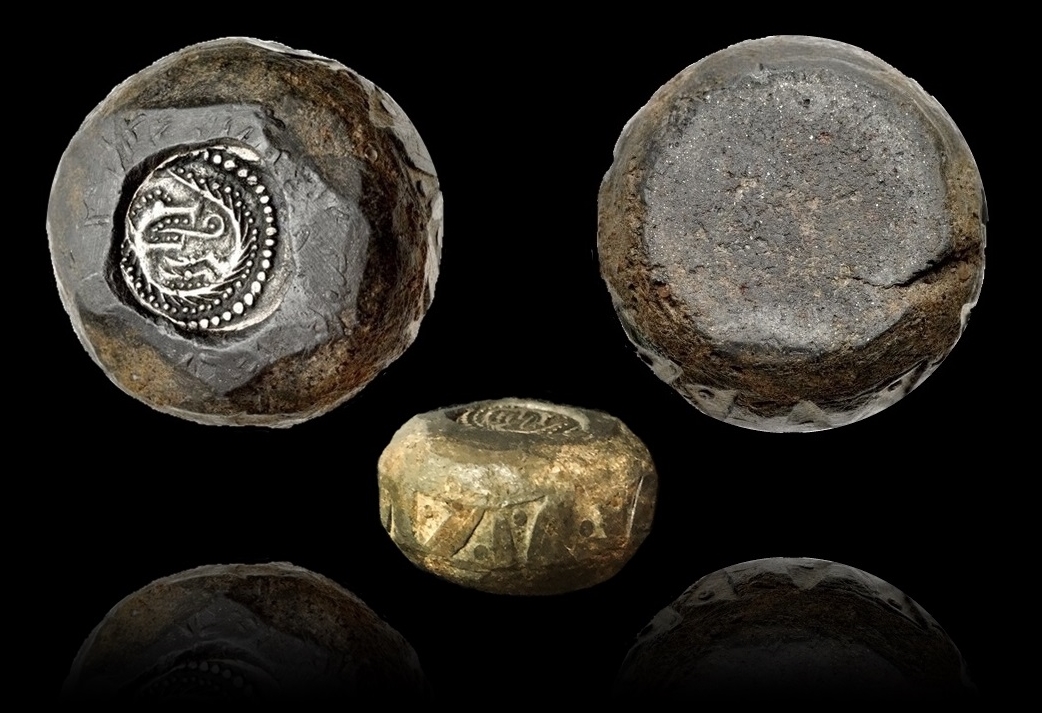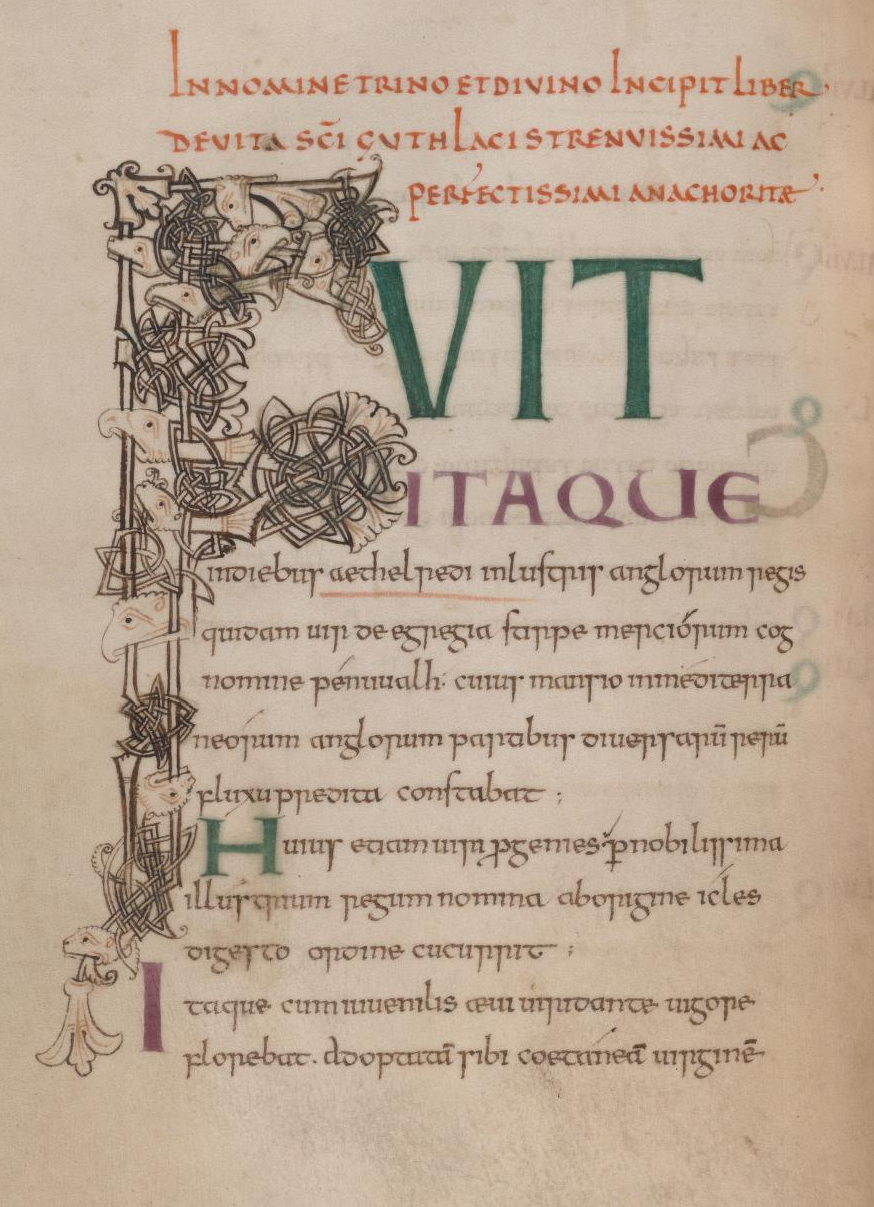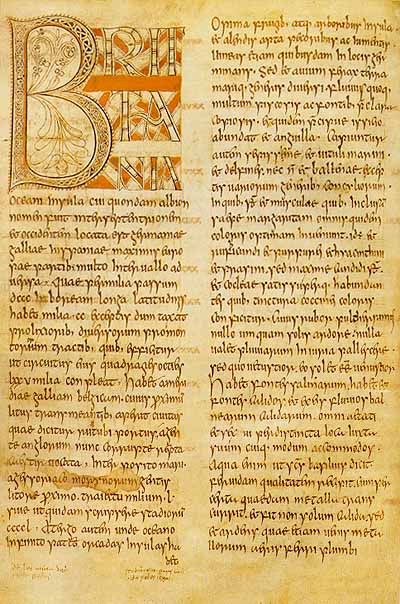|
Coenred Of Mercia
Coenred (also spelled Cenred or Cœnred fl. 675–709) was king of Mercia from 704 to 709. Mercia was an Anglo-Saxon kingdom in the English Midlands. He was a son of the Mercian king Wulfhere, whose brother Æthelred succeeded to the throne in 675 on Wulfhere's death. In 704, Æthelred abdicated in favour of Coenred to become a monk. Coenred's reign is poorly documented, but a contemporary source records that he faced attacks from the Welsh. Coenred is not known to have married or had children, although later chronicles describe him as an ancestor of Wigstan, a 9th-century Mercian king. In 709, Coenred abdicated and went on pilgrimage to Rome, where he remained as a monk until his death. In the view of his contemporary, Bede, Coenred "who had ruled the kingdom of Mercia for some time and very nobly, with still greater nobility renounced the throne of his kingdom". Æthelred's son Ceolred succeeded Coenred as king of Mercia. Mercia in the 7th century By the 7th century, Engl ... [...More Info...] [...Related Items...] OR: [Wikipedia] [Google] [Baidu] |
King Of Mercia
The Kingdom of Mercia was a state in the English Midlands from the 6th century to the 10th century. For some two hundred years from the mid-7th century onwards it was the dominant member of the Heptarchy and consequently the most powerful of the Anglo-Saxon kingdoms. During this period its rulers became the first English monarchs to assume such wide-ranging titles as ''King of Britain'' and ''King of the English''. Spellings varied widely in this period, even within a single document, and a number of variants exist for the names given below. For example, the sound ''th'' was usually represented with the Old English letters ð or þ. For the Continental predecessors of the Mercians in Angeln, see List of kings of the Angles. For their successors see List of English monarchs. Kings of the Mercians The traditional rulers of Mercia were known as the Iclingas, descendants of the kings of the Angles. When the Iclingas became extinct in the male line, a number of other families, ... [...More Info...] [...Related Items...] OR: [Wikipedia] [Google] [Baidu] |
Wessex
The Kingdom of the West Saxons, also known as the Kingdom of Wessex, was an Anglo-Saxon Heptarchy, kingdom in the south of Great Britain, from around 519 until Alfred the Great declared himself as King of the Anglo-Saxons in 886. The Anglo-Saxons believed that Wessex was founded by Cerdic and Cynric of the Gewisse, though this is considered by some to be a legend. The two main sources for the history of Wessex are the West Saxon Genealogical Regnal List and the ''Anglo-Saxon Chronicle'' (the latter of which drew on and adapted an early version of the List), which sometimes conflict. Wessex became a Christianity, Christian kingdom after Cenwalh () was baptised and was expanded under his rule. Cædwalla later conquered Kingdom of Sussex, Sussex, Kingdom of Kent, Kent and the Isle of Wight. His successor, Ine of Wessex, Ine (), issued one of the oldest surviving English law codes and established a second West Saxon bishopric. The throne subsequently passed to a series of kings wit ... [...More Info...] [...Related Items...] OR: [Wikipedia] [Google] [Baidu] |
Battle Of Dun Nechtain
The Battle of Dun Nechtain or Battle of Nechtansmere (; ) was fought between the Picts, led by King Bridei Mac Bili, and the Northumbrians, led by King Ecgfrith, on 20 May 685. The Northumbrian hegemony over northern Britain, won by Ecgfrith's predecessors, had begun to disintegrate. Several of Northumbria's subject nations had rebelled in recent years, leading to a number of large-scale battles against the Picts, Mercians and Irish, with varied success. After sieges of neighbouring territories carried out by the Picts, Ecgfrith led his forces against them, despite advice to the contrary, in an effort to reassert his suzerainty over the Pictish nations. A feigned retreat by the Picts drew the Northumbrians into an ambush at Dun Nechtain near the lake of Linn Garan. The battle site has long been thought to have been near the present-day village of Dunnichen in Angus. Recent research, however, has suggested a more northerly location near Dunachton, on the shores of Loch Insh ... [...More Info...] [...Related Items...] OR: [Wikipedia] [Google] [Baidu] |
Picts
The Picts were a group of peoples in what is now Scotland north of the Firth of Forth, in the Scotland in the early Middle Ages, Early Middle Ages. Where they lived and details of their culture can be gleaned from early medieval texts and Pictish stones. The name appears in written records as an Exonym and endonym, exonym from the late third century AD. They are assumed to have been descendants of the Caledonians, Caledonii and other northern British Iron Age, Iron Age tribes. Their territory is referred to as "Pictland" by modern historians. Initially made up of several chiefdoms, it came to be dominated by the Pictish kingdom of Fortriu from the seventh century. During this Fortriu#Verturian_hegemony, Verturian hegemony, ''Picti'' was adopted as an endonym. This lasted around 160 years until the Pictish kingdom merged with that of Dál Riata to form the Kingdom of Alba, ruled by the House of Alpin. The concept of "Pictish kingship" continued for a few decades until it was ab ... [...More Info...] [...Related Items...] OR: [Wikipedia] [Google] [Baidu] |
Battle Of The Trent
The Battle of the Trent was fought at an unspecified site near the River Trent within the Kingdom of Lindsey (today part of England), in 679. The battle was fought between the Northumbrian army of King Ecgfrith and the Mercian army of King Æthelred.Kirby, ''Earliest English Kings'', p. 93. The Northumbrians were victorious, ending Mercian domination of the area. Lindsey remained part of Northumbria until Mercia retook it 701. Bede notes in ''Ecclesiastical History of the English People'' that the 18-year-old subking, Ælfwine of Deira, was killed in the battle, and that this almost led to further conflict between the two kingdoms, needing the intervention of Theodore, the Archbishop of Canterbury.Bede, '' Historia ecclesiastica''Book IV, chapter 21 In his account of the battle, Bede recounts the tale of a Northumbrian thegn called Imm or Imma, who may have been the founder of the settlement of Immingham. Imma was captured by the Mercians and, proving troublesome, was s ... [...More Info...] [...Related Items...] OR: [Wikipedia] [Google] [Baidu] |
Ermenilda Of Ely
Saint Eormenhild (or ''Ermenilda'', ''Ermenildis'', ''Ermengild'', all meaning "battle-great", from eormen- "great", hild- "battle") (died about 700/703) is a 7th-century Anglo-Saxon saint venerated in the Eastern Orthodox and Roman Catholic churches. Life She features in the genealogies of various 11th- and 12th-century versions of the Kentish Royal Legend. These describe her as the daughter of King Eorcenberht of Kent and St Seaxburh of Ely, and wife to Wulfhere of Mercia, with whom she had a daughter, St Wærburh, and a son, Coenred. Eormenhild became a nun after her husband died in 675. In due course, she became abbess of Minster-in-Sheppey, which her mother had founded. Later, she became abbess of Ely. There are almost no contemporary records for her life. When discussing Wulfhere, Bede mentions neither her nor her daughter Wærburh. However, her name is mentioned as an abbess in a (copy of a) charter of King Wihtred of Kent, dated 699, along with three other abbes ... [...More Info...] [...Related Items...] OR: [Wikipedia] [Google] [Baidu] |
Saint Guthlac
Saint Guthlac of Crowland (; ; 674714AD) was a Christian hermit and saint from Lincolnshire in England. He is particularly venerated in the Fens of eastern England. Hagiography Early life Guthlac was the son of Penwalh or Penwald, a noble of the English kingdom of Mercia, and his wife Tette. Guthlac's sister is venerated as St Pega. As a young man, Guthlac fought in the army of King Æthelred of Mercia (). He subsequently became a monk at Repton Abbey in Derbyshire at the age of 24, under the abbess there (Repton being a double monastery). Two years later he sought to live the life of a hermit, and moved out to the island of Croyland, now called Crowland (in present-day Lincolnshire), on St Bartholomew's Day, 699. His early biographer, Felix, writing in the early 8th century, asserts that Guthlac could understand the ('sibilant speech', that is "barbarous language") of Brittonic-speaking demons who haunted him there, only because Guthlac had spent some time in exile am ... [...More Info...] [...Related Items...] OR: [Wikipedia] [Google] [Baidu] |
Wilfrid
Wilfrid ( – 709 or 710) was an English bishop and saint. Born a Northumbrian noble, he entered religious life as a teenager and studied at Lindisfarne, at Canterbury, in Francia, and at Rome; he returned to Northumbria in about 660, and became the abbot of a newly founded monastery at Ripon. In 664 Wilfrid acted as spokesman for the Roman position at the Synod of Whitby, and became famous for his speech advocating that the Roman method for calculating the date of Easter should be adopted. His success prompted the king's son, Alhfrith, to appoint him Bishop of Northumbria. Wilfrid chose to be consecrated in Gaul because of the lack of what he considered to be validly consecrated bishops in England at that time. During Wilfrid's absence Alhfrith seems to have led an unsuccessful revolt against his father, Oswiu, leaving a question mark over Wilfrid's appointment as bishop. Before Wilfrid's return Oswiu had appointed Ceadda in his place, resulting in Wilfrid's retirement to R ... [...More Info...] [...Related Items...] OR: [Wikipedia] [Google] [Baidu] |
Hagiographies
A hagiography (; ) is a biography of a saint or an ecclesiastical leader, as well as, by extension, an adulatory and idealized biography of a preacher, priest, founder, saint, monk, nun or icon in any of the world's religions. Early Christian hagiographies might consist of a biography or ' (from Latin ''vita'', life, which begins the title of most medieval biographies), a description of the saint's deeds or miracles, an account of the saint's martyrdom (called a ), or be a combination of these. Christian hagiographies focus on the lives, and notably the miracles, ascribed to men and women canonized by the Roman Catholic church, the Eastern Orthodox Church, the Oriental Orthodox churches, and the Church of the East. Other religious traditions such as Buddhism, Hinduism, Taoism, Islam, Sikhism and Jainism also create and maintain hagiographical texts (such as the Sikh Janamsakhis) concerning saints, gurus and other individuals believed to be imbued with sacred power. However, wh ... [...More Info...] [...Related Items...] OR: [Wikipedia] [Google] [Baidu] |
Anglo-Saxon Chronicle
The ''Anglo-Saxon Chronicle'' is a collection of annals in Old English, chronicling the history of the Anglo-Saxons. The original manuscript of the ''Chronicle'' was created late in the ninth century, probably in Wessex, during the reign of King Alfred the Great (r. 871–899). Its content, which incorporated sources now otherwise lost dating from as early as the seventh century, is known as the "Common Stock" of the ''Chronicle''.Hunter Blair, ''Roman Britain'', p. 11. Multiple copies were made of that one original and then distributed to monasteries across England, where they were updated, partly independently. These manuscripts collectively are known as the ''Anglo-Saxon Chronicle''. Almost all of the material in the ''Chronicle'' is in the form of annals, by year; the earliest is dated at 60 BC (the annals' date for Julius Caesar's invasions of Britain). In one case, the ''Chronicle'' was still being actively updated in 1154. Nine manuscripts of the ''Chronicle'', none of ... [...More Info...] [...Related Items...] OR: [Wikipedia] [Google] [Baidu] |
Charters
A charter is the grant of authority or rights, stating that the granter formally recognizes the prerogative of the recipient to exercise the rights specified. It is implicit that the granter retains superiority (or sovereignty), and that the recipient admits a limited (or inferior) status within the relationship, and it is within that sense that charters were historically granted, and it is that sense which is retained in modern usage of the term. In early medieval Britain, charters transferred land from donors to recipients. The word entered the English language from the Old French ', via -4; we might wonder whether there's a point at which it's appropriate to talk of the beginnings of French, that is, when it wa ... ', via Latin ', and ultimately from Ancient Greek">Greek (', meaning "layer of papyrus"). It has come to be synonymous with a document that sets out a grant of rights or privileges. Other usages The term is used for a special case (or as an exception) of an insti ... [...More Info...] [...Related Items...] OR: [Wikipedia] [Google] [Baidu] |
Historia Ecclesiastica Gentis Anglorum
The ''Ecclesiastical History of the English People'' (), written by Bede in about AD 731, is a history of the Christian Churches in England, and of England generally; its main focus is on the growth of Christianity. It was composed in Latin, and is believed to have been completed in 731 when Bede was approximately 59 years old. It is considered one of the most important original references on Anglo-Saxon history, and according to some scholars has played a key role in the development of an English national identity. Overview The , or ''An Ecclesiastical History of the English People'', is Bede's best-known work, completed in about 731. The first of the five books begins with some geographical background and then sketches the history of England, beginning with Julius Caesar's invasion in 55 BC. A brief account of Christianity in Roman Britain, including the martyrdom of St Alban, is followed by the story of Augustine of Canterbury, Augustine's mission to England in 597, which brou ... [...More Info...] [...Related Items...] OR: [Wikipedia] [Google] [Baidu] |





